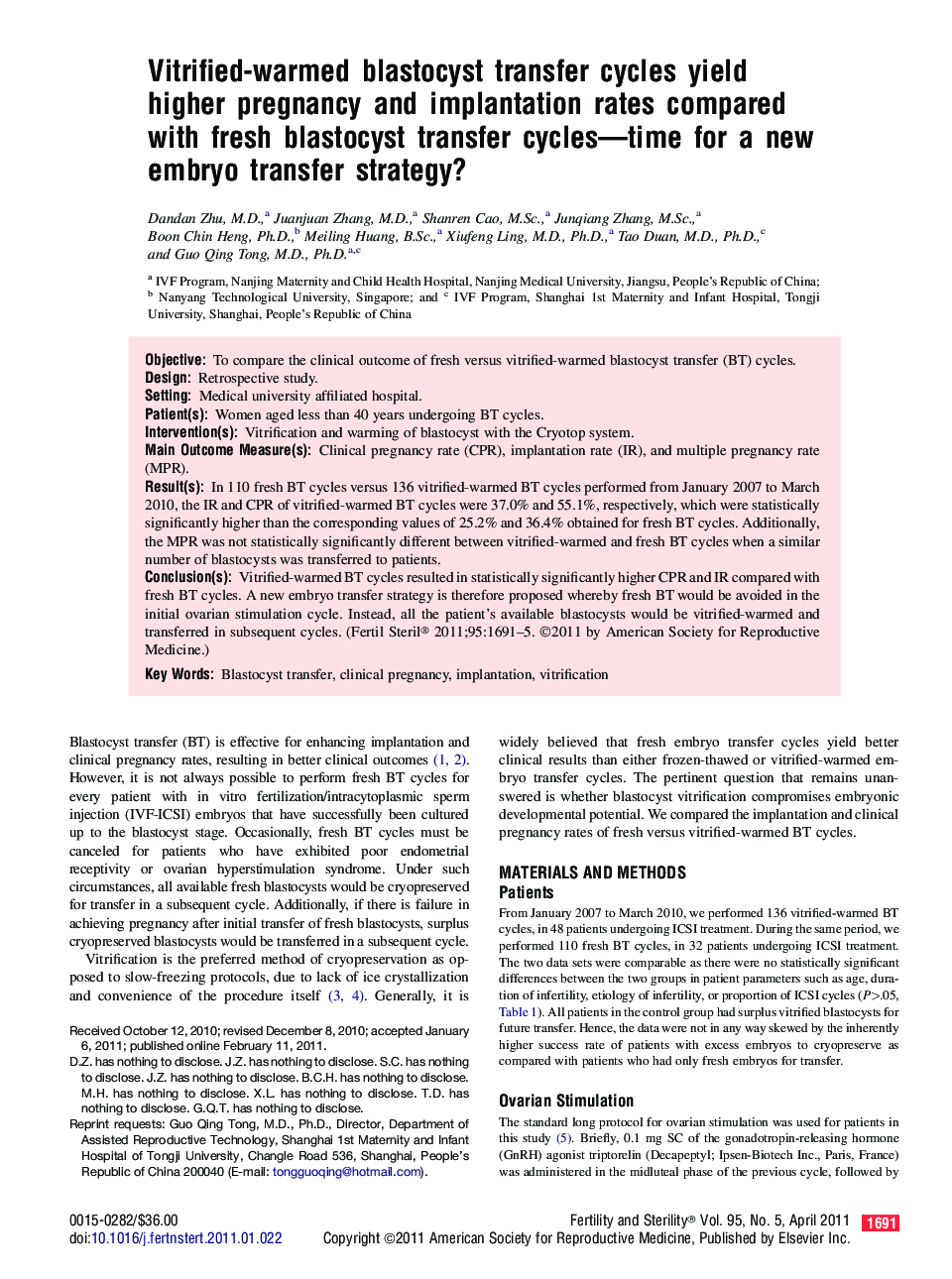| Article ID | Journal | Published Year | Pages | File Type |
|---|---|---|---|---|
| 3937943 | Fertility and Sterility | 2011 | 5 Pages |
ObjectiveTo compare the clinical outcome of fresh versus vitrified-warmed blastocyst transfer (BT) cycles.DesignRetrospective study.SettingMedical university affiliated hospital.Patient(s)Women aged less than 40 years undergoing BT cycles.Intervention(s)Vitrification and warming of blastocyst with the Cryotop system.Main Outcome Measure(s)Clinical pregnancy rate (CPR), implantation rate (IR), and multiple pregnancy rate (MPR).Result(s)In 110 fresh BT cycles versus 136 vitrified-warmed BT cycles performed from January 2007 to March 2010, the IR and CPR of vitrified-warmed BT cycles were 37.0% and 55.1%, respectively, which were statistically significantly higher than the corresponding values of 25.2% and 36.4% obtained for fresh BT cycles. Additionally, the MPR was not statistically significantly different between vitrified-warmed and fresh BT cycles when a similar number of blastocysts was transferred to patients.Conclusion(s)Vitrified-warmed BT cycles resulted in statistically significantly higher CPR and IR compared with fresh BT cycles. A new embryo transfer strategy is therefore proposed whereby fresh BT would be avoided in the initial ovarian stimulation cycle. Instead, all the patient’s available blastocysts would be vitrified-warmed and transferred in subsequent cycles.
